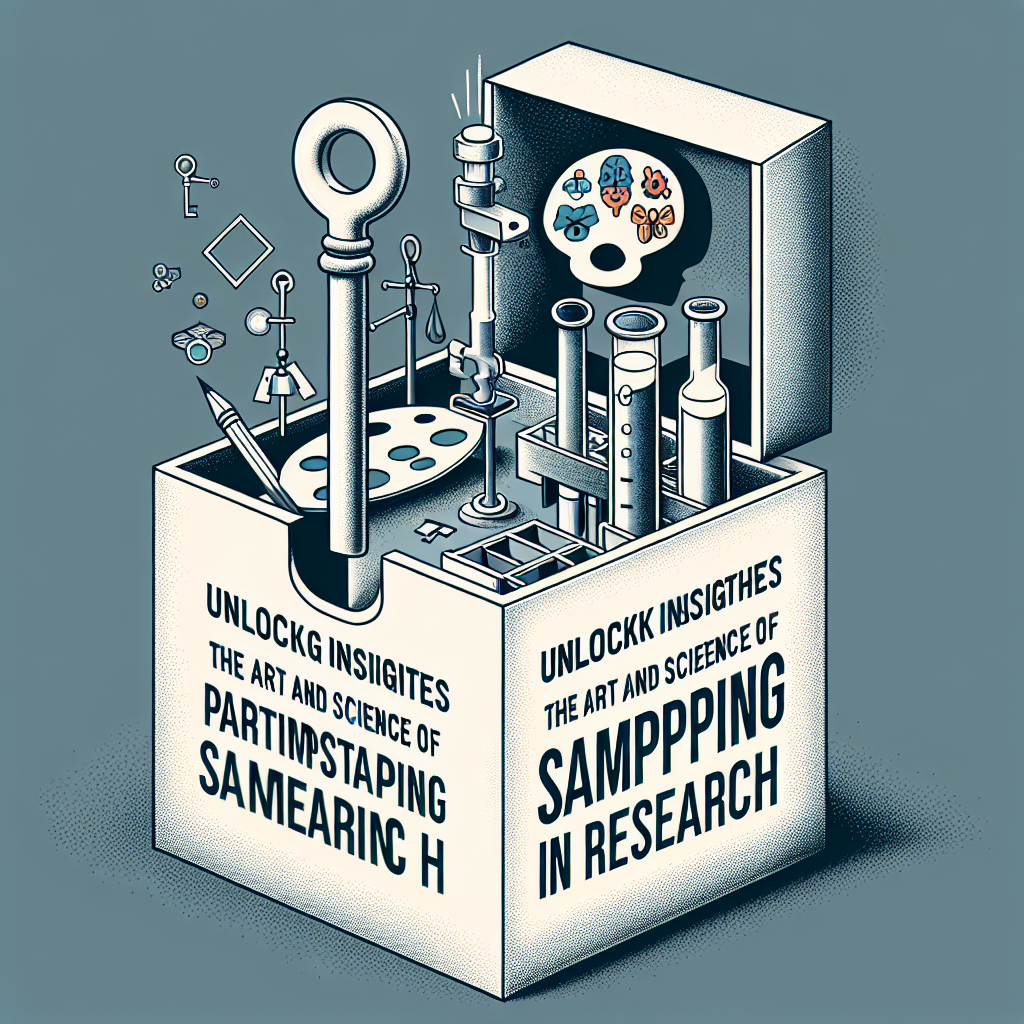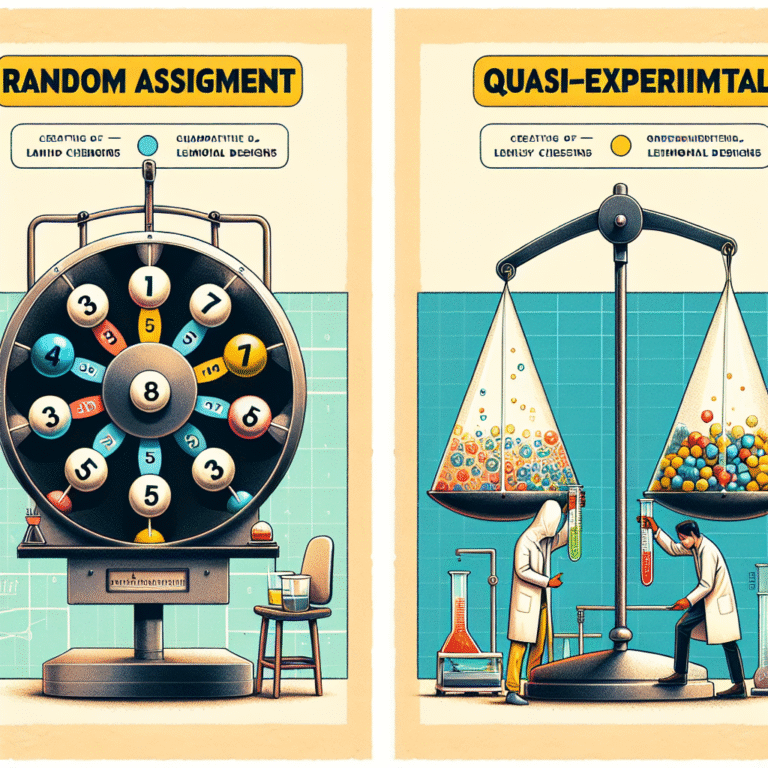
Introduction
In the ever-evolving landscape of research, the importance of effective participant sampling cannot be overstated. Have you ever wondered how researchers pull insights from the seemingly chaotic world of human behavior? The answer lies in mastering the art and science of participant sampling. This intricate process not only ensures the reliability and validity of research findings but also provides a framework for unlocking profound insights that can impact various fields—from psychology to marketing.
In this in-depth exploration, we delve into Unlocking Insights: The Art and Science of Participant Sampling in Research—a nuanced understanding that will equip researchers and practitioners alike with the tools they need. Whether you’re a seasoned expert or just beginning your journey, this article will unlock a treasure trove of knowledge, shedding light on the essential strategies, techniques, and real-world applications of participant sampling.
Understanding Participant Sampling
What is Participant Sampling?
Participant sampling refers to the methodology researchers use to select individuals to take part in a study. This choice is critical because the selected participants greatly influence the research outcomes. Unfortunately, not every participant is equally suited for every study. Hence, understanding the principles of effective sampling becomes indispensable.
Types of Sampling Methods
There are two primary categories of sampling: probability sampling and non-probability sampling.
-
Probability Sampling: Each participant has a known, non-zero chance of being selected, allowing for a higher degree of generalizability. Common methods include:
- Simple Random Sampling: Every individual has an equal chance of being selected.
- Stratified Sampling: The population is divided into subgroups, and samples are drawn from each.
- Cluster Sampling: The population is divided into clusters, and entire clusters are randomly selected.
- Non-Probability Sampling: Selection is based on subjective judgment rather than random selection. Methods include:
- Convenience Sampling: Participants are chosen based on availability.
- Purposive Sampling: Participants are selected for a specific purpose relevant to the research.
- Snowball Sampling: Existing participants recruit future subjects from among their acquaintances.
The Importance of Sampling in Research
Enhancing Validity and Reliability
One of the primary reasons Unlocking Insights: The Art and Science of Participant Sampling in Research is essential is its role in ensuring valid and reliable outcomes. A properly sampled group can yield results that reflect the larger population, while poor sampling can lead to misleading conclusions.
Ethical Considerations
Sampling also intersects with ethical considerations. Researchers have a responsibility to ensure that their sample is representative and does not disproportionately disadvantage any group. This is especially critical in fields like healthcare, where biases can have real-world ramifications.
Case Studies: Real-World Applications
Case Study 1: Medical Research with Stratified Sampling
In a recent medical trial exploring a new drug for diabetes, researchers implemented stratified sampling to ensure diverse genetic backgrounds were represented. By dividing the population into subgroups based on ethnicity and age, they were able to gather insights about how the drug affected different demographics. The resulting data not only provided credible evidence for the drug’s efficacy but also raised awareness about possible side effects in specific populations.
Analysis
This case underscores the value of stratified sampling in yielding robust, generalizable data, demonstrating that the right sampling method can lead to significant public health insights.
Case Study 2: Marketing Campaign Using Convenience Sampling
A retail company launched a survey to gauge customer satisfaction, opting for convenience sampling by targeting nearby shoppers. While this choice provided quick feedback, it revealed a skewed view of customer sentiment—primarily reflecting the opinions of loyal local customers rather than the broader consumer base.
Analysis
This example illustrates the pitfalls of convenience sampling and emphasizes the necessity for thoughtful methodological choices in research to avoid biased interpretations.
Best Practices for Effective Sampling
Define Your Population Clearly
Before embarking on any research, clearly defining your target population is paramount. Who are you trying to study? This clarity will guide your sampling decisions and ensure you gather relevant data.
Choose the Right Sampling Method
As we explored earlier, each sampling method has its place. The selection of the appropriate method hinges upon the research goals, available resources, and the nature of the population being studied.
Ensure Ethical Standards
Maintaining ethical standards in participant selection is not just a regulatory requirement; it is a moral obligation. Ensure that your sampling methods do not create biases or exclude certain groups unfairly.
Test Your Sampling Method
Pilot testing your sampling method can unveil potential issues before the main research begins. This practice allows for necessary adjustments and enhances the credibility of your findings.
Document Your Process
Transparency in research is vital for replicability. Document your sampling process in detail so others can understand how your conclusions were drawn.
Tables and Charts: Clarifying Critical Points
Table 1: Comparison of Sampling Methods
| Method | Type | Pros | Cons |
|---|---|---|---|
| Simple Random | Probability | High validity; unbiased | Requires complete population list |
| Stratified | Probability | Ensures diversity; improves accuracy | More complex to administer |
| Convenience | Non-Probability | Easy to conduct; quick data collection | Can be biased; lacks representativeness |
| Purposive | Non-Probability | Can target specific insights | Subjective; potential bias |
Chart 1: Impact of Sampling on Research Validity
A line chart depicting the correlation between proper sampling techniques and research validity could visually highlight the importance of effective sampling methods in research outcomes.
Conclusion
In the quest for knowledge and understanding, participant sampling emerges as a crucial pillar sustaining the integrity of research. Unlocking Insights: The Art and Science of Participant Sampling in Research not only enhances credibility but also opens avenues for exploration and discovery across disciplines.
As we conclude this exploration, remember that effective sampling is more than a methodological step; it’s an art form that requires careful execution and creative thinking. Whether you’re engaged in healthcare, social sciences, or marketing, the principles of participant sampling can guide you toward unlocking profound insights.
FAQs
1. What is the primary difference between probability and non-probability sampling?
Probability sampling involves random selection, ensuring every individual has a known chance of being included, while non-probability sampling lacks randomness and is based on subjective judgment.
2. Why is stratified sampling considered more reliable?
Stratified sampling is considered more reliable because it ensures diverse representation, reducing potential bias that may arise from a homogenous sample.
3. How can ethical concerns be addressed in participant sampling?
Ethical concerns can be addressed by ensuring informed consent, equitable participant selection, and transparency in reporting research findings.
4. What are some common pitfalls in implementing convenience sampling?
Common pitfalls include sampling bias and a lack of representativeness, which may lead to misleading conclusions that do not reflect the broader population.
5. How can I improve my sampling method?
Improvements can be achieved by clearly defining your population, carefully selecting your sampling technique, conducting pilot tests, and documenting your process for future reference.
In the dynamic world of research, mastering the science of participant sampling can be your ticket to unlocking transformative insights that ultimately benefit society. Embrace this art and elevate your research practices!














